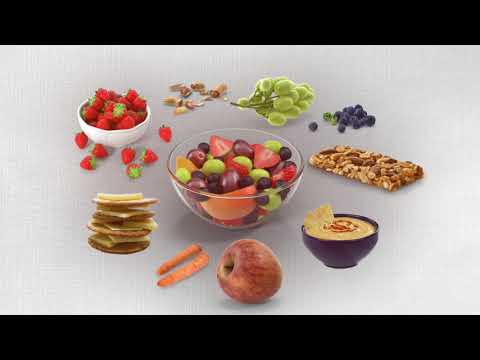According to the IFIC Foundation 2019 Food and Health Survey, more than 50% of people snack at least once per day. Despite its ubiquity, snacking often gets a bad reputation for contributing too many calories and too little nutrients to our diets. But are snacks always a bad thing?
When it comes to snacking, it’s important to consider your motive. Are you low on energy? Is it going to be a long time until your next meal? Are you wanting something sweet or salty? Are you thirsty? Understanding your motive for wanting a snack can be helpful in deciding what and how much to eat. Here are some ways to make sure you’re choosing the right snack for you.
Build a better snack
How do you decide what to eat when you’re hungry between meals? It has to taste good, but it also has to hold you over until your next meal. Research shows that fiber and protein can help us feel full. Generally speaking, it’s helpful to try to build a snack that includes multiple food groups. An example might be a banana with peanut butter and a handful of almonds or whole grain crackers, or a couple slices of cheese with sliced veggies.
Plan ahead
Sometimes our busy schedules prevent us from eating at exactly the “right time”—that is, when we’ve reached the perfect amount of hunger. When this happens, eating a small snack while staying hydrated can help prevent us from being too ravenous by the time we sit down for our next meal.
For some people, it may be helpful to plan ahead by keeping some on-the-go snacks handy. Examples of great on-the-go snacks include prepackaged hummus and sliced carrots, string cheese and an apple, or yogurt and a protein bar.
Tune in
Other times we just want a treat, like something sweet or salty. Regardless of what you’re eating, it’s important to be mindful. Research shows that mindfully eating may help reduce the likelihood of emotional eating or eating simply because food is available (even if you aren’t particularly hungry). Additionally, tuning into the taste and texture of food, as well as your hunger cues, can help you savor the occasion and stop you from becoming uncomfortably full. Need some help gauging your hunger? Check out our eat-mojis hunger scale.
Many factors—time, preference, budget, convenience and hunger levels—impact our snacking choices every day. Understanding your motive is the first step to building a better snacking experience.
This article is written by Alyssa Pike, RD, with contributions from Kris Sollid, RD

